Chapter 4, Part 22
In Mainland Southeast Asia, Ayutthaya was one of the most powerful kingdoms the region had ever seen. Established in the 14th century in what is now Thailand, it lasted for more than four centuries until its rival to the west – the Burmese – sacked the capital in the 18th century, effectively bringing the Thai kingdom to its demise. One year later, a general of the former Ayutthaya kingdom by the name of Taksin successfully retook Thonburi on the western bank of Chao Phraya River and soon founded a new kingdom with himself pronounced king.
However, fourteen years after ascending the throne, his kingdom fell into chaos following a coup as a result of his increasingly authoritarian rule. His general, Chao Phraya Chakri – later known as Phuttayotfa Chulalok – who at that time was fighting rebels in Cambodia, returned to the capital to restore order. After successfully usurping the throne, the general then established a new dynasty – the Chakri dynasty – and was addressed as King Rama I. Since then the Chakris have been ruling the country with Vajiralongkorn (King Rama X) its current king after ascending the throne last year following the death of his father, the highly popular Bhumibol Adulyadej (King Rama IX).
Soon after becoming a king, Rama I moved the capital of his kingdom from Thonburi to Rattanakosin Island across the river – both are now parts of modern Bangkok. On the island, he commissioned the construction of the Grand Palace compound which included Wat Phra Kaew, the most revered Buddhist temple in Thailand. After its completion, the temple became home to the Emerald Buddha, an image of of the Buddha believed to bring prosperity and pre-eminence to the country in which it resides. The Emerald Buddha was once housed in Haw Phra Kaew in Vientiane for more than 200 years until Chao Phraya Chakri claimed it upon his victory against Lan Xang (modern-day Laos). He then transported the image to the heart of Siam, and after becoming king, he moved it to the newly-constructed Wat Phra Kaew.
Entering the 19th century, Asia became hotly contested among the Europeans as their influence and economic dominance grew following their success in imposing monopolies on the trade of spices and other commodities in the region. By the mid-19th century, King Mongkut (Rama IV) ascended the throne of Siam, a vast kingdom with lands comprising what is today Thailand, the Shan State of Myanmar, Laos, Cambodia, Southern Vietnam, and Northern Malaysia. However, at the same time the British had already conquered Lower Burma including Yangon (Rangoon) and were about to take full control of Upper Burma as well. Meanwhile to the east, in what is today Central and Northern Vietnam, the French began consolidating their power and strengthened their presence.

Statue of the Buddha in Borobudur Style
As Rama IV was pressured by the European powers next door, he relented to British demands for the abolition of a state monopoly in several commodities, as well as tax reductions for trading with foreign countries. The king’s concern was rather justified as the British by then had conquered lands from what is now Pakistan all the way to Burma – the latter being the very nation that ransacked Ayutthaya a century earlier. However, King Mongkut’s successor, Chulalongkorn (Rama V), who ascended the throne in 1868, faced even greater pressure both from the British and the French. During his reign, the British seized the Shan states and incorporated them into British Burma, while the French – who had taken control of Southern Vietnam during Rama IV’s rule – further expanded their colonial territory to include most of modern-day Laos and Cambodia.
Following their gains, the French made an offer to the British to divide Siam in two: all land west of the Chao Phraya River would become British and the east French. The British, however, were reluctant and insisted on making Siam a buffer zone between their vast colonial empire and French Indochina. In 1896, the two powers finally agreed not to colonize Siam, although that didn’t stop the two from encroaching a little further into Siam’s territory.
In a bid to prevent his nation from being colonized, Rama V implemented bureaucratic and societal reforms. He also decided to relinquish Siam’s control over non-Thai lands, ceding Lao-speaking and Khmer-speaking lands to the French, and Malay-speaking regions (which now make up the northern Malaysian states of Kedah, Kelantan, Perlis and Terengganu) to the British, in addition to the Shan states which were conquered earlier. By doing so, he was able to keep the Thai-speaking heartlands of Siam independent.
Today, Thais are not just proud of the fact that their country was the only one in Southeast Asia never colonized by the Europeans, but also of their kings, particularly the much-loved late King Bhumibol Adulyadej. Since changing their system from an absolute monarchy into a constitutional one in 1932, Thai kings only assume ceremonial functions. Nevertheless, Thais always sought guidance from their kings whenever political turmoil emerged – the last one in 2014 was the country’s 12th occasion since the introduction of the constitutional monarchy system.
Bangkok itself is now one of the most cosmopolitan cities in Asia, known for its beautiful Buddhist temples, thriving economy, and vibrant nightlife. In Silom, a sub-district of the city where we stay, our hostel is hidden in an alley amid an eclectic neighborhood consisting of five-star hotels, street food stalls, trinket sellers, a Tamil Hindu temple and a mosque. So lively and open, like the Thai people themselves.
More than 1 km to the southwest of our hostel is Sathorn (Sathon) pier, the location of one of the multiple bombings that struck Bangkok in August 2015. It is where we embark on a short river cruise that takes us upstream on the Chao Phraya. A few European buildings line the riverbanks, a reminder of a time when European rivals flocked to Bangkok on a mission to exert influence on Siam. But as we all now know, the Thais were successful in maintaining their independence by relinquishing territories they once conquered. Was it in the best interest of the Khmer, Lao, Shan and Malay peoples? It depends on who you ask.
Click here for the full list of stories from the Spice Odyssey series.


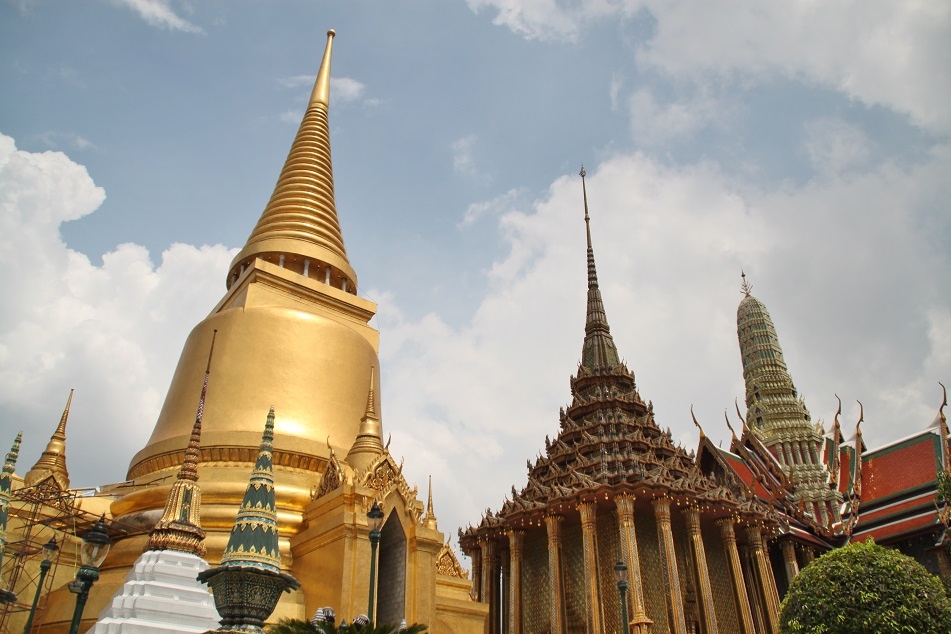




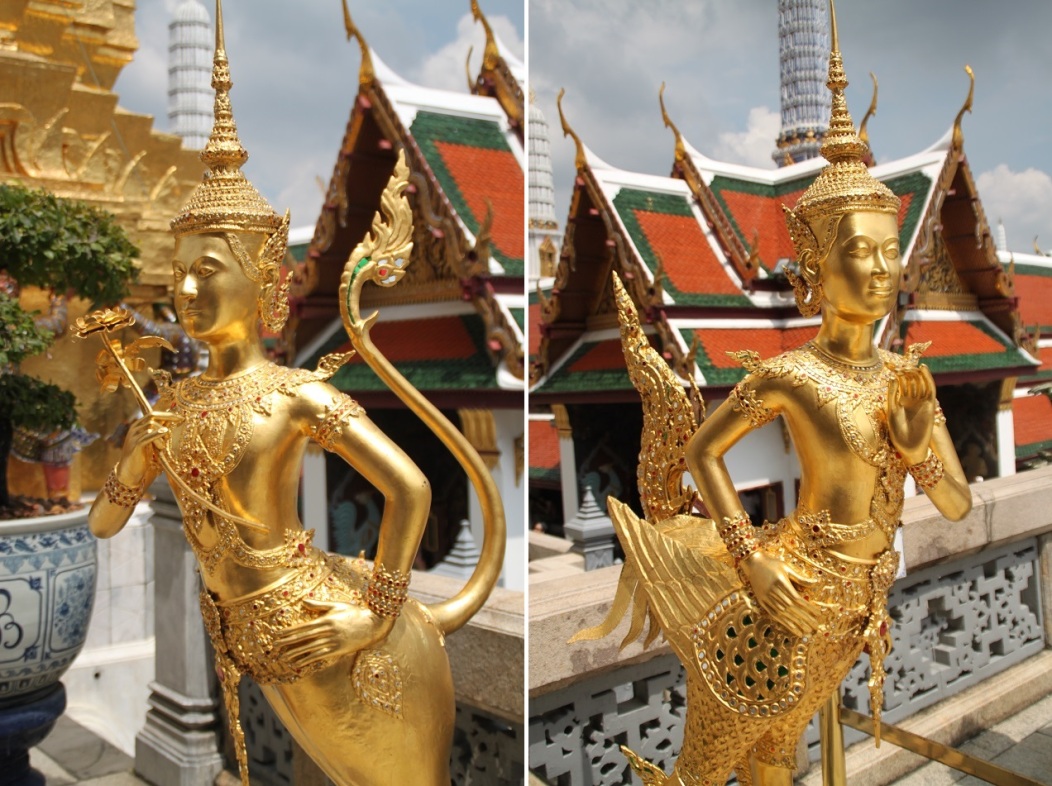


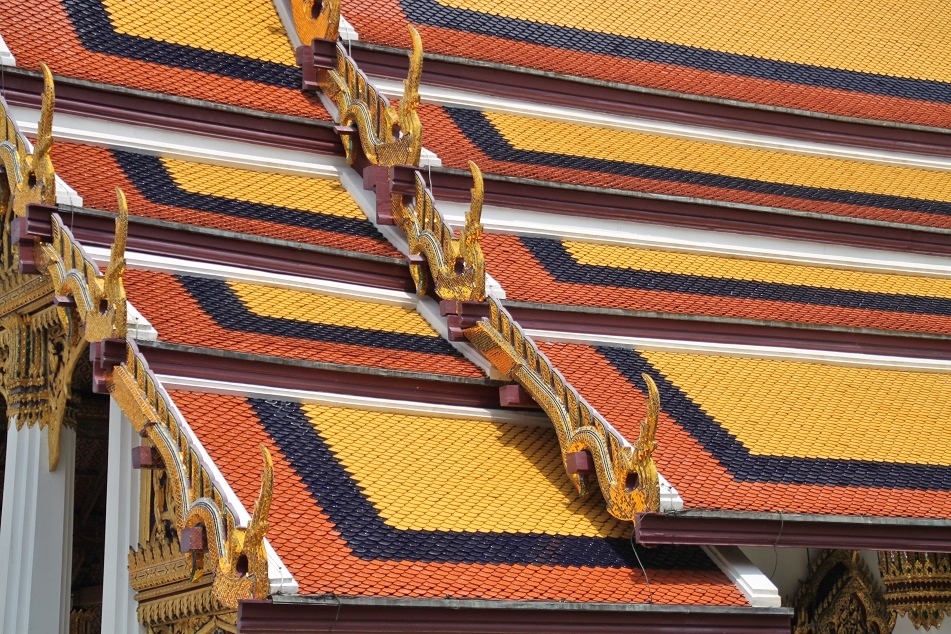
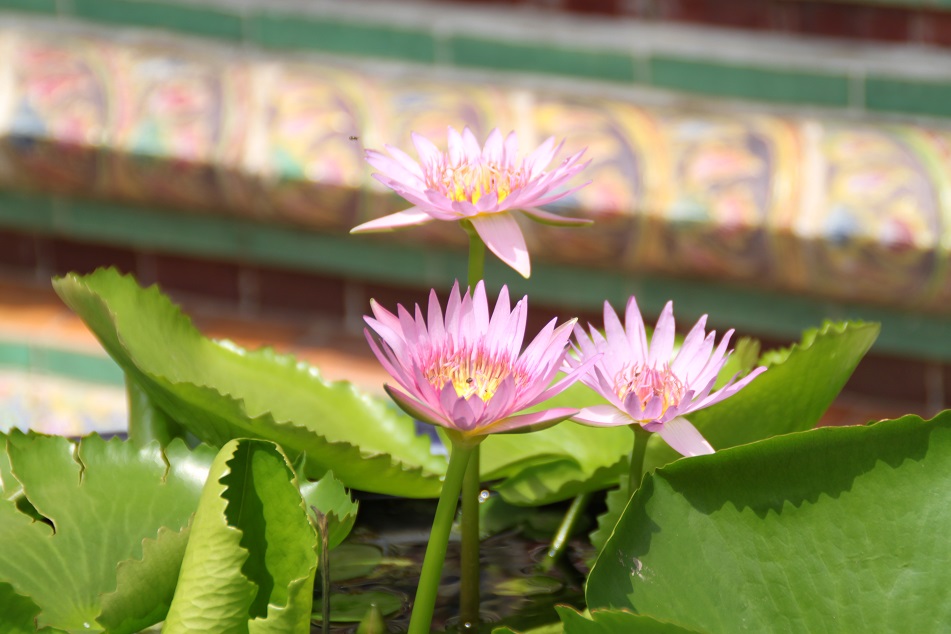

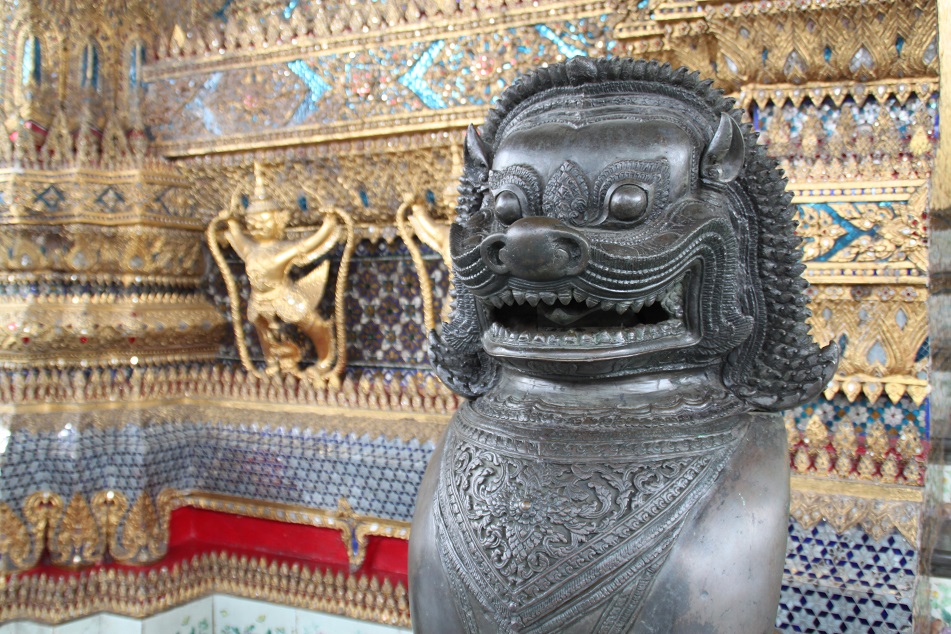

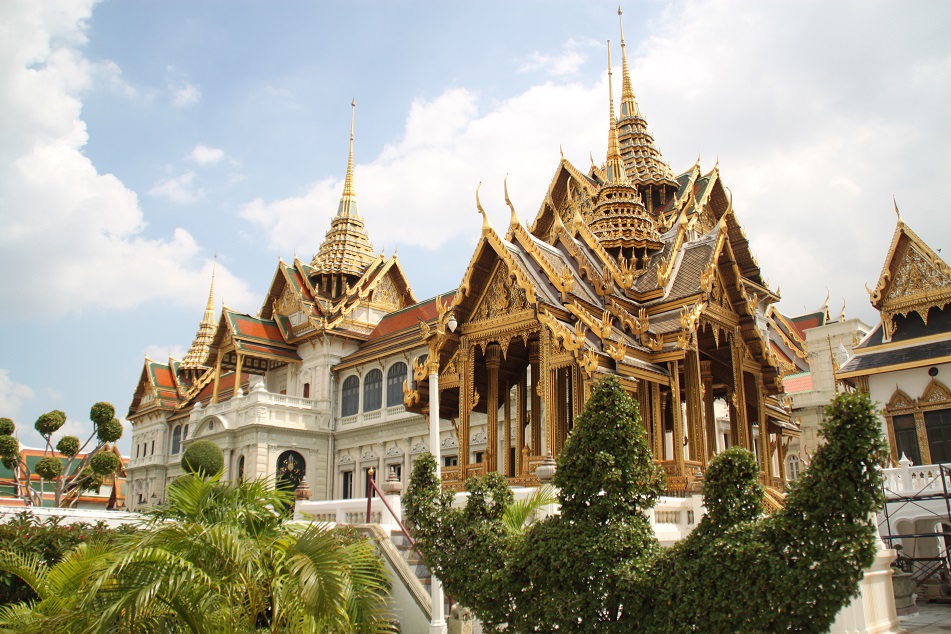

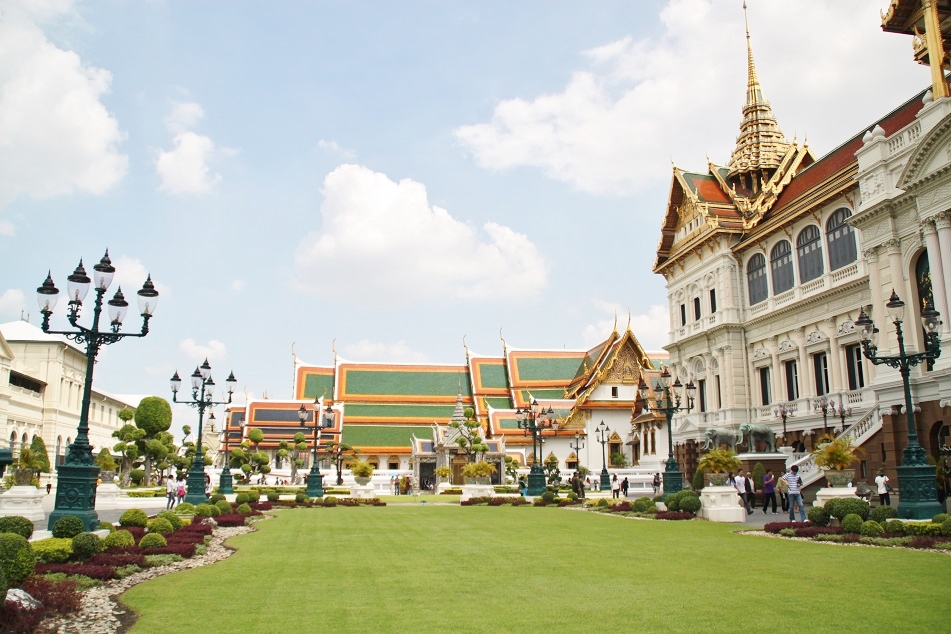



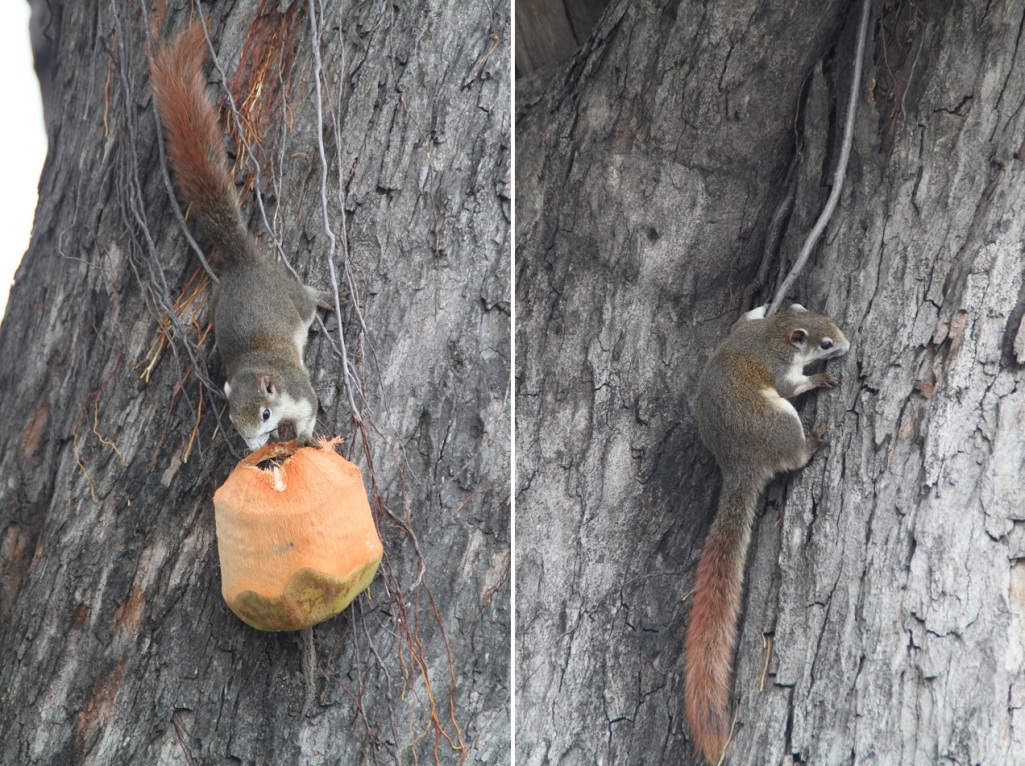

Beautiful photographs! I want to visit even more now.
LikeLike
Thanks! Hopefully when you come the weather will be nicer. I remember on my first visit to the palace back in 2011, those exquisite tiles glistened under the sun. As you can see, it was rather cloudy the last time I went.
LikeLiked by 1 person
I can imagine how beautiful that was. Your photos came out beautiful despite the weather anyway!
LikeLike
Too kind of you, but thanks again.
LikeLike
Beautiful pictures and great historical information. Enjoyed reading this one
LikeLike
Thank you for your kind words! Glad you enjoyed this post.
LikeLiked by 1 person
🙂
LikeLike
I really enjoyed your post, thank-you. Oh and great photos too!
LikeLike
Much appreciated, Stephen. Fortunately I was in Bangkok toward the end of the rainy season, so there were periods of clear skies.
LikeLiked by 1 person
Strange to think that Thailand was not colonized because the British simply said “no” to the French offer. If they had played along, I wonder how different things would have turned out. Perhaps there would be an attempt to Romanize Thai script (like the French did in Vietnam), and Bangkok might have been reduced to a frontier town. But Thailand does know how to use its soft power to maintain some form of independence… World War II is another example. After neutrality became untenable, becoming an ally of Japan shielded it from many of the horrors experienced by its neighbors.
LikeLike
Interesting thoughts, James. After conquering such vast lands straddling the Indian subcontinent all the way to the Malay Peninsula, the British would have easily said yes to the French offer — which would have created boundaries like those defined by the Sykes-Picot Agreement. But apparently they had a different thought. Speaking of the foreign policy of Thailand, I guess pragmatism has always been the core value of its international diplomacy.
LikeLiked by 1 person
These look beautiful. Really want to visit.
LikeLike
The Grand Palace is indeed a beautiful place, and despite its ever-growing popularity, it still is one of my favorite places in Bangkok. Hope you’ll get there sooner than later!
LikeLike
Hi, I nominated you for an award, if you like to participate, here is the link: https://curlygirlabroad.wordpress.com/2017/02/26/awards-festival/
LikeLike
Really appreciate your kind gesture, Emma. However, due to the structure of my blog, I’m afraid I won’t be able to participate in the awards. But thanks again!
LikeLiked by 1 person
You’re welcome!
LikeLike
Bama, the Grand Palace is one of the most photogenic places on earth. The concentration of architectural detail, colors and sculptures made it one of our favorites in SE Asia. As always your photos are excellent and your history detailed and interesting. Great post. ~James
LikeLike
James, I still remember my excitement upon entering the gate of Wat Phra Kaew for the first time back in 2011. It was a sunny day and those tiles at Phra Mondop sparkled beautifully, the golden chedi shone brightly, and the main temple’s roofs radiated this mesmerizing sheen. It was a magical experience, indeed. Thanks for the time you spent reading this post, and as always, your kind words are always appreciated!
LikeLike
Wow! What a story! And the images of both ancient and modern architecture are superb!
LikeLike
To me the story about how Thailand managed to remain independent is equally fascinating with how Singapore was kicked out of Malaysia against its own will. Thanks for reading and leaving such kind words, Peter!
LikeLiked by 1 person
An incredibly detailed and vivid overview. Bangkok is absolutely on my bucket list now!
LikeLike
Hi Gabe. In spite of its popularity, to me Bangkok still is among the most vibrant and fascinating cities in Southeast Asia. And the Grand Palace compound is truly a jewel amid this sprawling metropolis. Thanks for reading, and hopefully you’ll get the chance to visit this part of the world in the near future!
LikeLiked by 1 person
Bangkok is on my Top ten destinations to visit one day. Beautiful pictures, content and that mango sticky rice looks really good!
LikeLike
At first, I was a bit skeptical about mango sticky rice. I mean, it’s just sticky rice and mango! But I was pleasantly surprised by its smoothness and sweetness. Hope you’ll visit Bangkok really soon, Liz. And thanks for your kind words!
LikeLiked by 1 person
BEAUTIFUL pictures!! And, very inspiring writing! I definitely want to add Bangkok to my travel bucket list after reading this post.
LikeLike
So kind of you, Lalitha. I’m glad this post intrigued you and made you add Bangkok in your wishlist — it’s a bustling metropolis, but it has this unique charm and character. Thanks for reading!
LikeLiked by 1 person
Great post Bama! It is interesting that they were able to avoid colonization. I think Ethiopia was the only African country to do the same. Europe controlled the world at one time.
It has been nearly six months since King Bhumibol Adulyadej passed away and yet most of the people still wear black out of mourning. Shrines and photos of him are still found everywhere. It is incredible the amount of love they have for him.
Great shots of the Grand Palace. Did they let you in by yourself?
LikeLike
Thanks Jeff! It’s fascinating to imagine how the world must have looked like when Europe controlled much of it. Whatever discussed and negotiated in London, Paris or other major cities in the continent would have impacted the entire world.
It’s incredible that many people in Thailand are actually still mourning. But from what I read, the new king seems to be doing better than people expected, which is a good thing given the king’s significance as a unifying figure.
Actually I didn’t go inside the main hall of the Grand Palace. Did you go in when you went there?
LikeLike
Absolutely stunning photos! Thank you for sharing.
LikeLike
And thank you for reading, Piia! Glad you enjoyed this post.
LikeLike
What wonderful photos – really enjoyed your post. When we last went to the Grand Palace it was very hot and busy – I don’t think we managed to appreciate it very much. Your photos really express the beauty of the Grand Palace complex. Thank you.
LikeLike
Thanks Cath & Andy! The Grand Palace has become a lot busier nowadays, thanks to the increasing number of Chinese tourists who usually travel in big groups. But I still vividly remember how I felt when I first went back in 2012. It was a sunny morning, and as soon as I stepped inside the palace grounds around Wat Phra Kaew, I was mesmerized by all the colors that glistened in the sun.
LikeLiked by 1 person
This is such a refreshing read. Loved the pictures here. did you try their china town food spread? I just love Bangkok. shopping, food, people everything about the city makes me feel happy. Wish I could live there as an expat. Do stop by my blogpost about the city if you have time. https://orangewayfarer.wordpress.com/2017/08/01/sawasdee-bangkok/
LikeLike
Thanks! Actually I had Thai food most of the time, which was cheap and of course delicious. And mango sticky rice! I had heard about it for a long time, but only on my third trip to Bangkok did I try it. Yum!
LikeLike
Pingback: Hue Tombs: Opulence for Eternity | What an Amazing World!